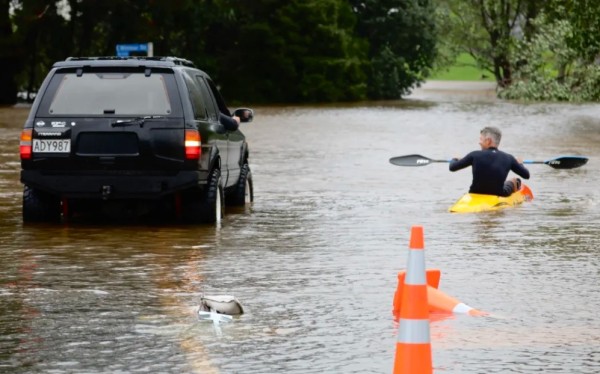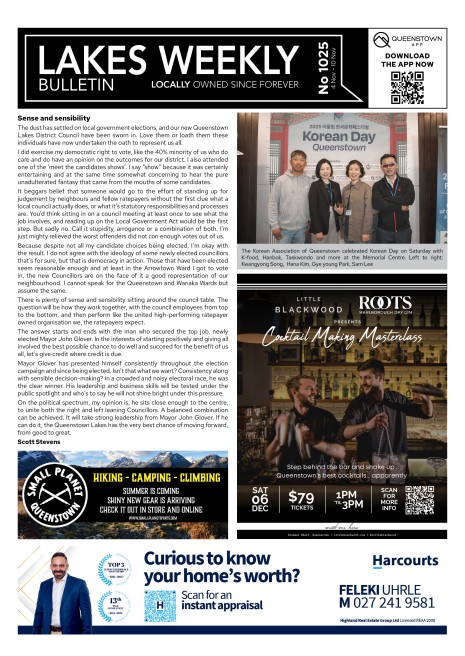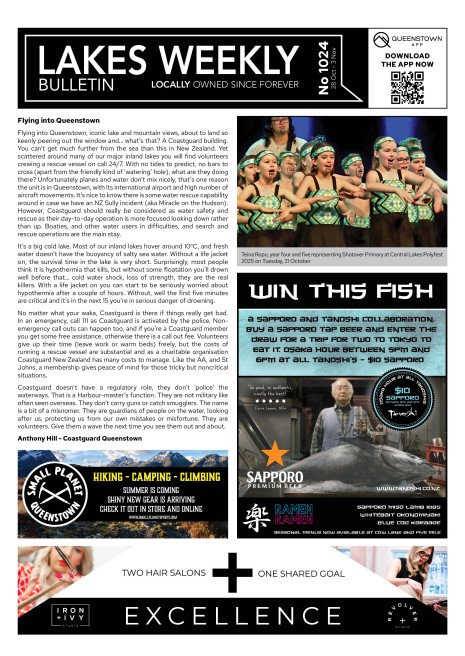NZ's year in weather: 'Astounding' temperatures for two months, but rainfall not at record levels

2023 was New Zealand's second hottest year on record and among the cloudiest, NIWA has announced today.
Globally, last year has been confirmed today as the warmest year on record but in New Zealand the record belongs to 2022.
Data just released by the National Institute of Water and Atmospheric Research shows its seven weather stations recorded eight months last year when temperatures were above average or well above average.
May and September were the warmest on record, coming in 1.1C and 2C above the 1991-2020 monthly averages. NIWA says that result is "astounding".

Coloured stripes showing a time series of the national temperature anomaly calculated from NIWA's Seven Station Photo: Supplied / Niwa
On the other hand August was relatively cool with temperatures below average. NIWA says it is the first month to have a temperature below average since May 2017.
And the place with the highest recorded sunshine hours last year was not Whakatāne or Nelson as is often the case. Instead it was in the Mackenzie Basin with 2658 hours recorded at Lake Tekapo.
NIWA principal scientist Christopher Brandolino says he hopes people don't become acclimatised to all the data showing record temperatures.
"I hope it doesn't become white noise, all these record years. I hope people think about what is happening."
He says Aucklanders lived through the extraordinary rainall of the Anniversary weekend floods.
"It was eye-opening. We lived through it.
"Then there was Cyclone Gabrielle. We saw it coming. It had profound impacts on people."
NIWA's annual report states: "Climate change continues to influence New Zealand's long-term temperature trend, which has warmed at a rate of approximately 1.17 degrees Celsius (±0.2degC) per century according to NIWA's seven-station series."
The year was also the fourth cloudiest on record. To determine this it uses solar radiation data stretching back to 1972. It showed solar radiation anomaly was 97 percent of normal, meaning more clouds.
21st wettest year

Flooding near Waimauku in the Auckland region. Photo: RNZ / MARIKA KHABAZI
Meanwhile, it was not as wet as a year of floods from Cyclone Gabrielle and the Auckland Anniversary weekend downpours might suggest.
NIWA says it was New Zealand's 21st wettest year.
Unsurprisingly, Northland, Auckland, Coromandel, Gisborne and Hawkes Bay got rainfall dumps well above normal; Bay of Plenty and parts of Wairarapa got more rain than normal, but the rest of the country was at standard rainfall levels or below.
Auckland received its highest ever recorded rainfall during the Auckland Anniversary floods.
A weather station in Albert Park, central Auckland, recorded a monthly total of 538.5mm of rain - the highest since records began in 1853.
The West Coast experienced significantly less rain than normal although the country's wettest locations were in the region: Cropp River 11717mm, Tuke River 10454mm and Hokitika 8250mm.
The highest rainfalls recorded in a day were 565mm at Castle Mount in Southland on 16 September and 561mm at Tareha (near the Esk River in Hawke's Bay) on 13 February.
The lowest recorded rainfalls were at Ranfurly with 359mm, then Alexandra with 361mm, followed by Cromwell with 404mm.
Of the six main centres in 2023:
- Tauranga was the wettest and sunniest
- Dunedin was the driest
- Auckland was the warmest
- Christchurch and Dunedin were equal-coolest
- Wellington was the least sunny.
'A different El Niño
The weather patterns of 2023 and into this year have been dominated by the shift from La Nina weather patterns in the first half of last year to El Niño in the second half.
Brandolino says, "This is a different El Niño. This is not your parents' or your grandparents' El Niño. This one was different."
Previous El Niño weather events have seen warm ocean temperatures coming off south America but there were still large patches of cold or normal water in the Pacific.
In 2023, the Pacific experienced "an absence of cooler ocean temperatures".
This meant that the patterns of El Niño were exacerbated.










